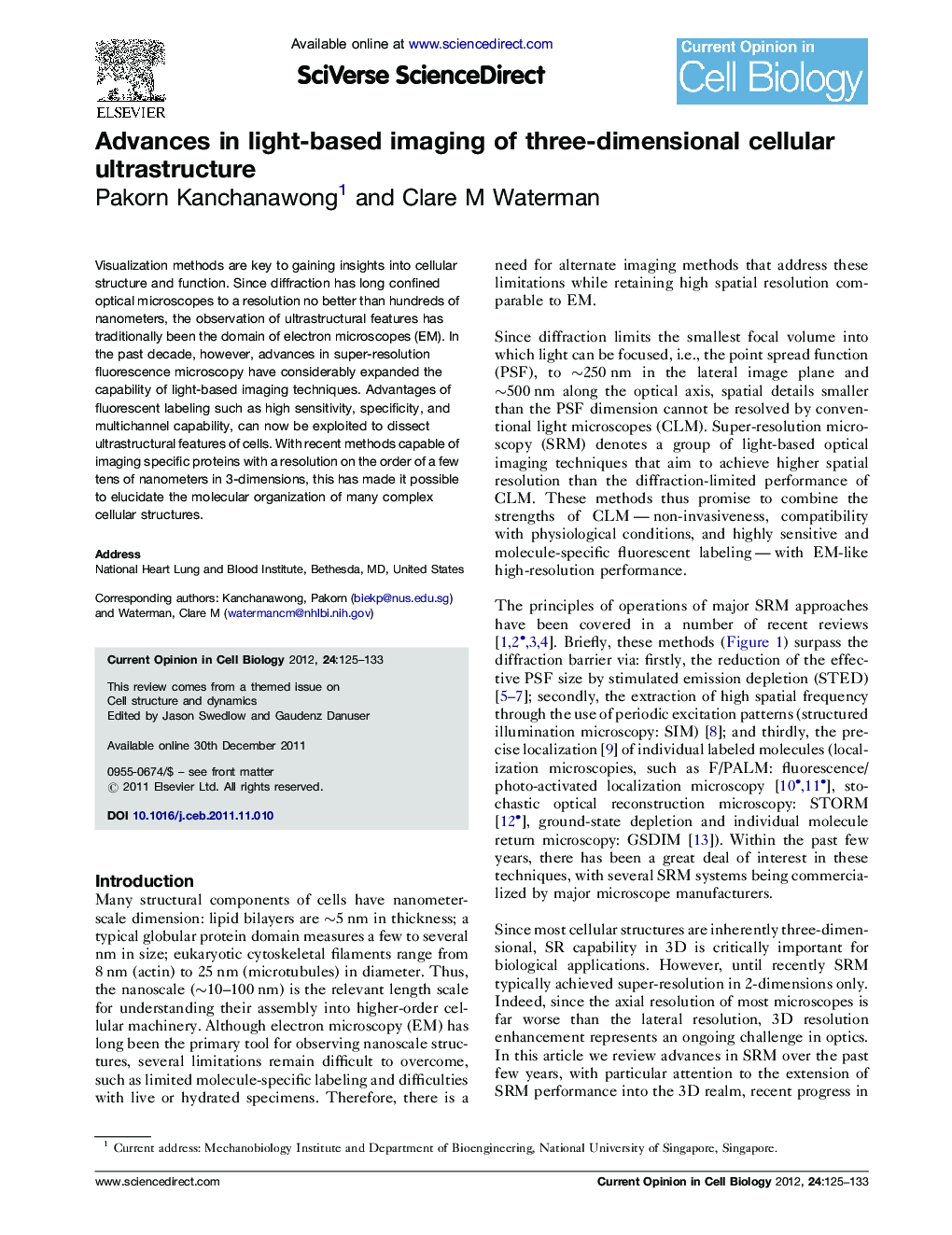| Article ID | Journal | Published Year | Pages | File Type |
|---|---|---|---|---|
| 2169791 | Current Opinion in Cell Biology | 2012 | 9 Pages |
Visualization methods are key to gaining insights into cellular structure and function. Since diffraction has long confined optical microscopes to a resolution no better than hundreds of nanometers, the observation of ultrastructural features has traditionally been the domain of electron microscopes (EM). In the past decade, however, advances in super-resolution fluorescence microscopy have considerably expanded the capability of light-based imaging techniques. Advantages of fluorescent labeling such as high sensitivity, specificity, and multichannel capability, can now be exploited to dissect ultrastructural features of cells. With recent methods capable of imaging specific proteins with a resolution on the order of a few tens of nanometers in 3-dimensions, this has made it possible to elucidate the molecular organization of many complex cellular structures.
